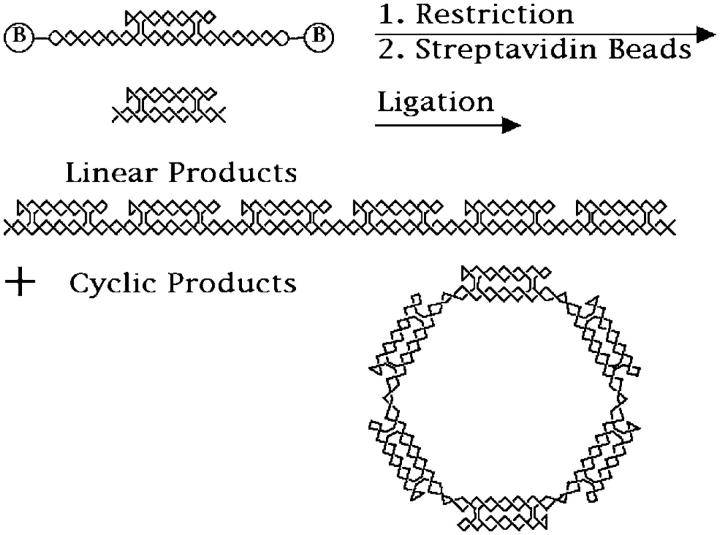FIGURE 5.
The ligation-closure experiment. The initial purified topologically closed product is shown at the top of the figure. The biotin groups along the lower domain backbone helices are shown outside for clarity. The molecule is restricted, and its biotinylated hairpins are then removed (along with partial digestion products) by treatment with streptavidin beads. The product of this restriction is shown below the unrestricted molecule. The resulting molecules are then ligated to yield a collection of linear and cyclic molecules. A distribution of molecules is obtained, but both the linear and cyclic species are represented here only by hexamers. Note that the cyclic molecule is a catenane, but if the unlabeled strand were nicked, a single-stranded circle would result. Removal of one of the two continuous strands from the linear system would result in a rotaxane. Under denaturing conditions, the strands of the linear molecule are capable of dissociating.

